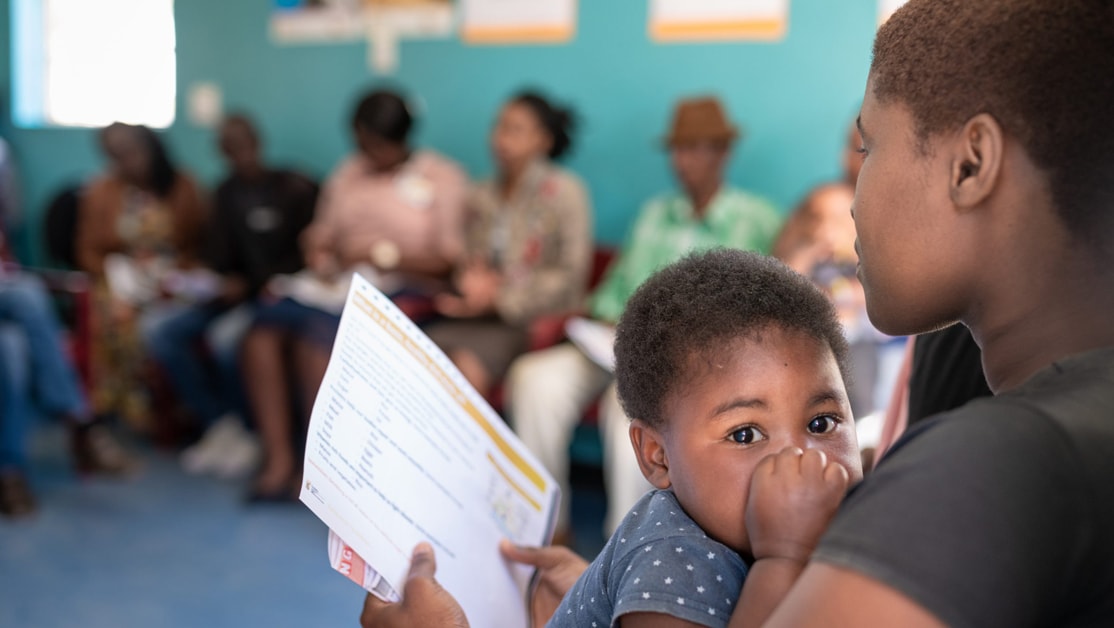At a glance
This story shares the unique challenges Ugandan mothers face regarding mother-to-child HIV transmission. With support from PEPFAR, CDC continues to work towards an HIV-free generation in Uganda.

Preventing mother-to-child transmission of HIV in Uganda

A recent report by the Uganda Ministry of Health shows a significant reduction in the rates of mother-to-child transmission of HIV in the country. These rates dropped from over 20 percent in 2000 to 2.8 percent in 2021. CDC has been assisting Ugandan mothers in reducing rates of HIV transmission to their children with support from the U.S. President's Emergency Plan for AIDS Relief (PEPFAR) since 2003.
Although mother-to-child transmission of HIV is preventable through antiretroviral treatment (ART) during pregnancy and postpartum, there were still more than 150,000 new infections in children (0 – 14 years) worldwide in 2020. The UNAIDS 2021 Spectrum estimates indicate there were 5,500 new childhood HIV infections in Uganda due to mother-to-child transmission. Half of those infections occurred among infants born to mothers who stopped HIV treatment during pregnancy and breastfeeding. According to the 2018–2023 Ugandan National Elimination Plan II, mother-to-child transmission of HIV accounts for 18 percent of all new infections in Uganda. It is also the primary source of infections among children.
Impact
For a woman living with HIV, achieving viral load suppression through effective HIV treatment virtually eliminates the possibility of transmitting HIV to her child. From 2017 to 2019, PEPFAR provided $3.25 million through CDC to evaluate the impact of programs geared toward prevention of mother-to-child transmission (PMTCT) in Uganda.
The impact evaluation (IE) study, conducted by the Uganda Ministry of Health in collaboration with CDC's partner Rakai Health Sciences Program (RHSP), assessed several key indicators. These indicators included HIV transmission rates, rates of new HIV infections among mothers during pregnancy and the breastfeeding period, and infant mortality rates. The findings of the study showed a significant reduction in rates of mother-to-child transmission in Uganda over the 20 years of support from CDC and PEPFAR implementing partners.
Study highlights
The highlights of the impact evaluation revealed both advancements and persisting challenges regarding mother-to-child HIV transmission in Uganda, such as:
Transmission decreases
The overall mother-to-child transmission rate at 18 months post-partum was 2.8 percent. This is below the national goal of 5 percent.
Infants and young mothers
Infants born to younger mothers had higher rates of HIV infection. Findings showed that 3.7 percent of infants born to mothers aged 15–24 had HIV. In contrast, 1.4 percent of infants born to mothers 25 years and older had HIV.
Treatment duration
Mothers on HIV treatment throughout pregnancy and breastfeeding had significantly lower risk of HIV transmission to their infants.
Continued U.S. government support
Aligned with global targets and Uganda's strategic vision, PEPFAR's true definition of success is zero transmission of HIV from mother to child.
With support from PEPFAR, CDC continues to work with implementing partners to eliminate mother-to-child transmission of HIV in Uganda.
PEPFAR's PMTCT efforts in Uganda are focused along four key areas including:
- Prevention of HIV in women including those of reproductive age.
- Preventing unplanned pregnancies among women living with HIV.
- Preventing mother-to-child HIV infection.
- Treating women with HIV to keep them and their family healthy.
CDC on the frontlines
CDC is a significant contributor to the country's PEPFAR program efforts, which involve identifying pregnant and breastfeeding women who are living with HIV. The program immediately enrolls these women in treatment and supports them to achieve viral suppression, a marker of treatment success. This effort also helps minimize the transmission of the virus to their babies through pregnancy, childbirth, and the breastfeeding period.
As of March 2022, CDC supports HIV treatment for over 700,000 Ugandans living with HIV. This includes 19,875 pregnant and breastfeeding women, representing 99% PMTCT ART coverage among those with HIV infection. With new, more effective treatment, the early (0–2 months) mother-to-child transmission rate at CDC-supported PMTCT facilities dropped to 1.6 percent as of March 2022. This is down from 3.2 percent at the end of September 2017 (FY17Q4).
"We are pleased to see the positive impact of our efforts in reducing the rates of mother-to-child transmission of HIV in Uganda," said Dr. Lisa Nelson, CDC-Uganda country director. "We know much work remains to eliminate mother-to-child transmission and we are committed to the task. This includes direct HIV prevention services as well as layered services that financially empower adolescent girls and young women, such as the DREAMS program, support to orphans and vulnerable children, and interventions that reduce stigma and gender-based violence."
